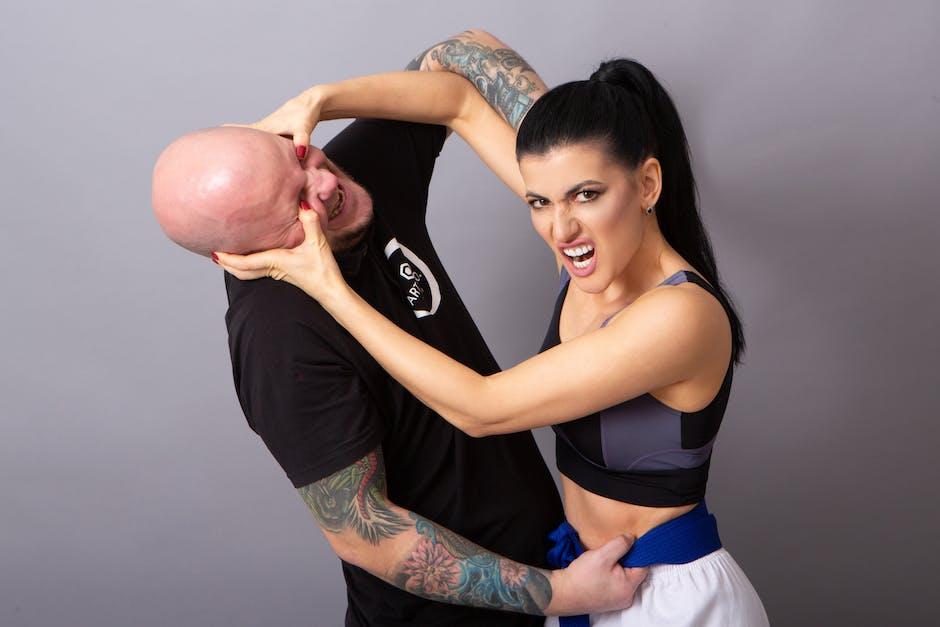Turning discomfort into a discovery of new strengths is like finding treasure in the most unexpected places. It’s not easy, but it’s worth it. Discomfort often feels like an unwelcome guest, but what if it’s actually a teacher in disguise? By leaning into those uneasy moments, you can uncover resilience, courage, and abilities you didn’t even know you had.
Keep reading to learn how discomfort can be a powerful catalyst for growth, why it’s essential to embrace challenges, and how to transform struggles into stepping stones for a stronger, more fulfilled life.
Key Takeaways
- Discomfort is a natural part of growth and can lead to incredible personal transformation.
- Facing challenges builds resilience and uncovers hidden strengths.
- Strategies like shifting your mindset, setting small goals, and avoiding comparisons can help you thrive through tough times.
- Real-life stories show how others have turned pain into purpose, offering inspiration for your journey.
Understanding Discomfort
Defining discomfort and its role in personal growth
Discomfort is that uneasy feeling when you’re pushed out of your comfort zone. It’s the sweaty palms before a big presentation or the knot in your stomach when trying something new.
But here’s the thing: discomfort is where growth happens. It’s like a muscle being stretched—uncomfortable at first, but stronger afterward. Without discomfort, you’d stay stuck in the same patterns, never discovering what you’re truly capable of.
The psychological impact of facing challenges
When you face challenges, your brain goes into overdrive. It’s wired to protect you, which is why discomfort often triggers fear or doubt. But overcoming these feelings rewires your brain, building mental toughness.
Psychologists call this post-traumatic growth, where people emerge from struggles with a renewed sense of purpose and strength. It’s proof that discomfort doesn’t just test you—it transforms you.
Common misconceptions about discomfort
Many people think discomfort is a sign they’re doing something wrong. But that’s not true. Discomfort doesn’t mean failure; it means progress.
Another myth? That you have to face it alone. In reality, leaning on others for support can make the journey less daunting and more rewarding.

The Connection Between Discomfort and Strength
How adversity builds resilience
Think of resilience like a rubber band. The more you stretch it, the stronger it becomes. Adversity forces you to adapt, think creatively, and persevere.
Each challenge you face adds another layer to your resilience, making you better equipped to handle future obstacles.
The science of growth through struggle
Studies show that struggle activates neuroplasticity, the brain’s ability to adapt and grow. When you push through discomfort, your brain forms new connections, making you more adaptable and resourceful.
This is why people who face hardships often emerge with newfound skills and perspectives.
Examples of strength emerging from hardship
Take Brian, for example. After battling bladder cancer, he turned his experience into a mission to promote healthy living. His story is a testament to how pain can lead to purpose. You can read more about his inspiring journey here.
Or consider Caleb, who found strength in community after a heartbreaking loss. His story reminds us that even in the darkest times, there’s light to be found when we lean on others (source).

Strategies for Turning Discomfort Into Strength
Embracing discomfort as a learning opportunity
Shifting your mindset towards challenges
Instead of seeing discomfort as a roadblock, view it as a stepping stone. Ask yourself, “What can I learn from this?”
Viewing failures as stepping stones
Failure isn’t the end—it’s a lesson. Each misstep brings you closer to success. Think of it like climbing a staircase; every stumble is just part of the climb.
Setting achievable goals during tough times
Breaking down large tasks into smaller targets
Big challenges can feel overwhelming. Break them into bite-sized pieces. Celebrate each small win—it’s progress, no matter how tiny.
Celebrating small victories
Did you take one step forward today? That’s worth celebrating. Small victories build momentum, keeping you motivated through tough times.
Avoiding negative comparisons and criticism
Focusing on personal progress
Your journey is yours alone. Comparing yourself to others is like comparing apples to oranges—it’s pointless. Focus on how far you’ve come.
Ignoring unconstructive feedback
Not all criticism is helpful. Learn to filter out the noise and focus on constructive advice that helps you grow.

Lessons Learned from Real-Life Stories
Brian’s journey: Overcoming illness and finding purpose
Brian’s story isn’t just about surviving cancer—it’s about thriving afterward. He turned his pain into a platform for change, proving that discomfort can lead to incredible strength.
Stories of individuals who turned pain into purpose
From athletes overcoming injuries to entrepreneurs bouncing back from failures, countless stories show how discomfort can spark transformation.
For example, the connection between physical and mental health plays a crucial role in holistic wellness. You can explore more about this here.
Key takeaways from these inspiring narratives
These stories teach us that discomfort isn’t the enemy—it’s the catalyst. They remind us that strength often comes from the most unexpected places.

Practical Tips for Harnessing Strength Through Discomfort
Developing a growth-oriented mindset
Start by reframing challenges as opportunities. Instead of asking, “Why me?” ask, “What can I learn?”
Learning from mistakes and setbacks
Mistakes aren’t failures—they’re feedback. Use them to adjust your approach and try again.
Building a support system for encouragement
Surround yourself with people who lift you up. Whether it’s friends, family, or a support group, having a strong network makes all the difference.
Practicing self-compassion and patience
Be kind to yourself. Growth takes time, and it’s okay to stumble along the way.
The Long-Term Benefits of Embracing Discomfort
Increased resilience and adaptability
The more you face discomfort, the more resilient you become. It’s like building a mental armor that helps you weather any storm.
Discovering hidden talents and strengths
Discomfort often reveals abilities you didn’t know you had. It’s like uncovering buried treasure within yourself.
Living a more purposeful and fulfilling life
When you embrace discomfort, you open the door to a life filled with growth, purpose, and fulfillment.

Conclusion
Recap of the importance of discomfort in personal growth
Discomfort isn’t something to fear—it’s something to embrace. It’s the key to unlocking your potential and discovering new strengths.
Encouragement to embrace challenges as opportunities
The next time you face a challenge, remember: it’s not a setback—it’s a setup for growth. Lean into it, and you’ll come out stronger on the other side.
Final thoughts on turning struggles into strengths
Life’s toughest moments often lead to its greatest rewards. So, take a deep breath, face the discomfort, and watch as it transforms you into the strongest version of yourself.
For more insights on how the mind and body work together to overcome challenges, check out this article.
By embracing discomfort, you’re not just surviving—you’re thriving. And that’s a strength worth celebrating.
Turning Discomfort Into A Discovery Of New Strengths: Your Go-To FAQ for Growth and Resilience
What does it mean to turn discomfort into a discovery of new strengths?
It means using challenging or uncomfortable situations as opportunities to learn, grow, and uncover abilities or qualities you may not have realized you possessed. It’s about shifting your perspective to see discomfort as a catalyst for personal development.
Why is discomfort important for personal growth?
Discomfort often pushes us out of our comfort zones, where real growth happens. It challenges us to adapt, think creatively, and develop resilience, ultimately helping us discover new strengths and capabilities.
How can I start embracing discomfort in my daily life?
Begin by identifying small, manageable challenges that push you slightly out of your comfort zone. Reflect on the experience afterward to recognize what you’ve learned or achieved. Over time, you’ll build confidence in facing bigger challenges.
What are some common examples of discovering strengths through discomfort?
Examples include public speaking despite fear, navigating a career change, or overcoming personal setbacks. These situations often reveal qualities like adaptability, courage, and problem-solving skills you didn’t know you had.
How can I stay motivated when discomfort feels overwhelming?
Focus on your long-term goals and remind yourself of the benefits of growth. Break the challenge into smaller steps, celebrate small wins, and seek support from friends, mentors, or a community to stay encouraged.
Are there risks to pushing myself too far out of my comfort zone?
Yes, pushing too far too quickly can lead to burnout or unnecessary stress. It’s important to find a balance by gradually expanding your comfort zone and recognizing when to pause and recharge.
Can discomfort lead to discovering emotional strengths as well?
Absolutely. Emotional discomfort, such as dealing with loss or conflict, can help you develop empathy, emotional intelligence, and resilience. These strengths can improve your relationships and overall well-being.
How does mindset play a role in turning discomfort into strength?
A growth mindset is key. Believing that challenges are opportunities to learn helps you approach discomfort with curiosity and determination rather than fear or avoidance.
What role does self-reflection play in this process?
Self-reflection allows you to analyze your experiences, identify lessons learned, and recognize the strengths you’ve developed. It’s an essential step in transforming discomfort into personal growth.
How can I measure my progress in discovering new strengths through discomfort?
Track your achievements, no matter how small, and compare where you started to where you are now. Journaling, seeking feedback, and celebrating milestones can help you see how far you’ve come in your journey of growth.



